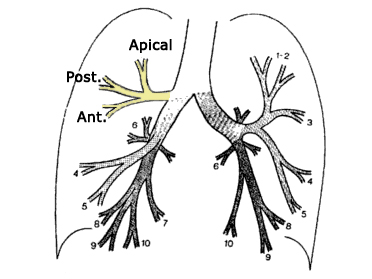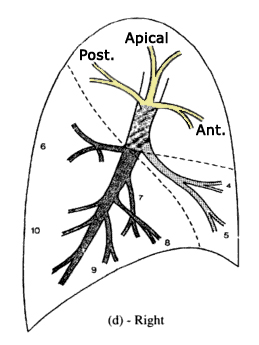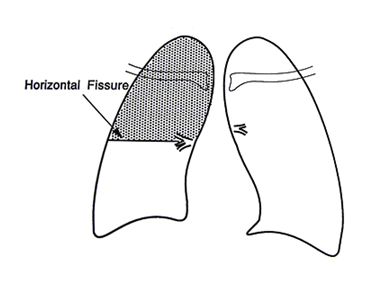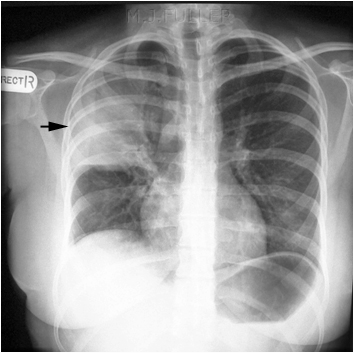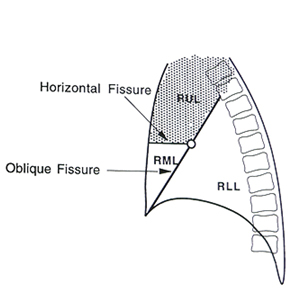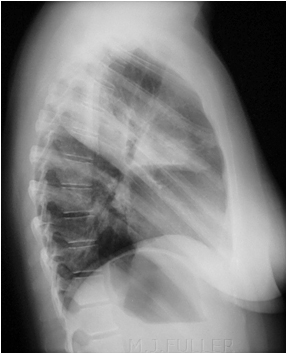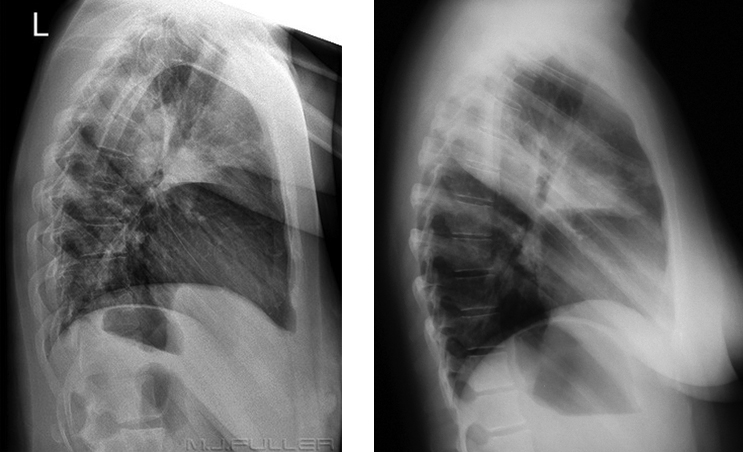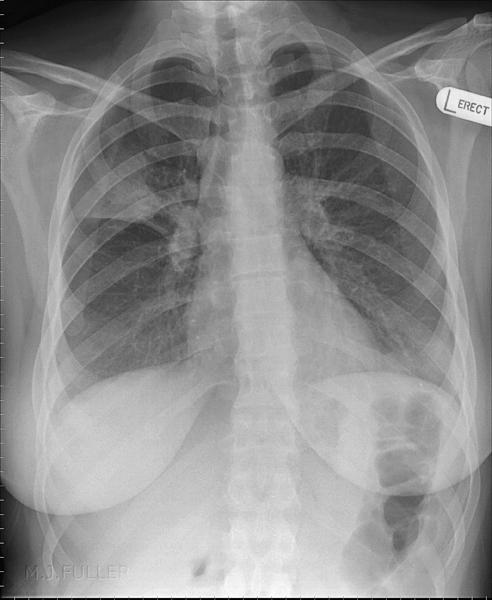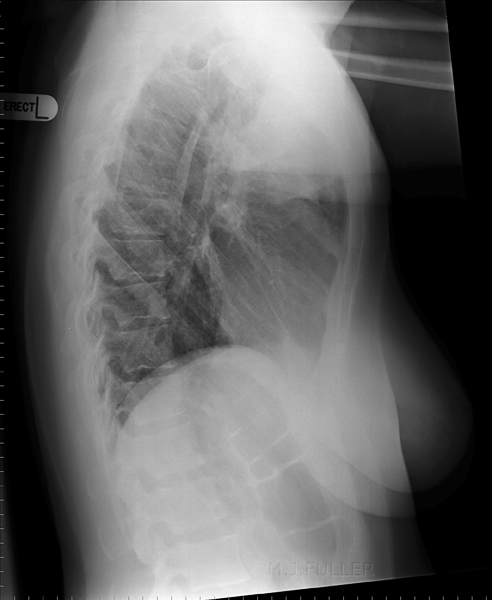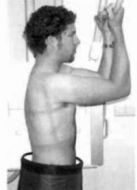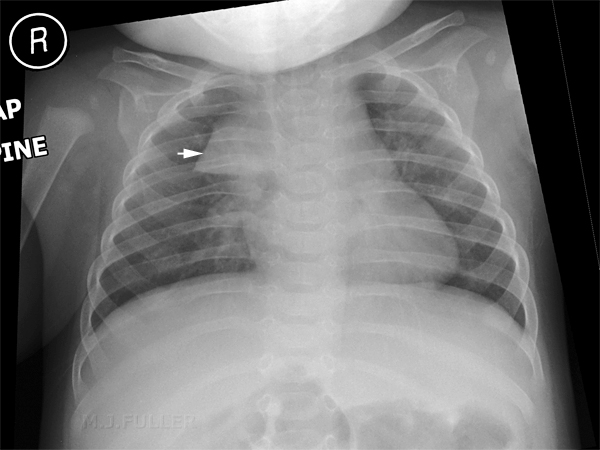Right Upper Lobe Consolidation
Right upper lobe (RUL) consolidation is a relatively straightforward diagnosis. The RUL is not hidden behind the heart or diaphragm and is relatively uncomplicated except perhaps by the presence of an azygous lobe (normal anatomical variant).
The Meaning of the Term Consolidation
One of the unfortunate aspects of the term consolidation is that its meaning can be different depending on who is using the term. When a clinician uses the term consolidation he/she is usually referring to a consolidation associated with acute pneumonia. Thus, the term consolidation and pneumonia have very similar meaning and are almost used interchangeably. Strictly speaking, the term consolidation does not imply any particular aetiology or pathology. Acute pneumonia is the commonest cause but not the only cause of consolidation. ( other causes include chronic pneumonia, pulmonary oedema and neoplasm). Thus when a radiologist has reported a chest X-ray examination and notes the presence of consolidation he/she is simply stating that some of the lung airspace has been replaced by a fluid.
Notes on Consolidation
- Refers to fluid in the airspaces of the lung
- Consolidation may be complete or incomplete
- The distribution of the consolidation can vary widely. A consolidation could be described as “patchy”, “homogenous”, or generalised”.
- A consolidation may be described as focal or by the lobe or segment of lobe affected
Radiographic Technique
It is sometimes useful to perform an apical lordotic view to help demonstrate equivocal pathological appearances in the upper lobes. It is also advantageous to direct patients to cross their arms across their heads for the lateral view (as opposed to hands on head and elbows forward). The upper lobes are frequently partially obscured by upper arm soft tissues on the lateral view when the hands on head, elbows forward technique is used.
The Right Upper Lobe Anatomy
adapted from <a class="external" href="http://books.google.com.au/books?id=Bif0zpmEWtAC" rel="nofollow" target="_blank">By Fred W. Wright Radiology of the Chest and Related Conditions: Together with an Extensive Illustrative Collection of Radiographs CRC Press, 2002</a>
The RUL is comprised of three segments: apical, posterior, and anterior
Further information on lung anatomy here
Benjamin Felson (<a class="external" href="http://www.amazon.com/Chest-Roentgenology-Benjamin-Felson/dp/0721635911/ref=sr_1_2?ie=UTF8&s=books&qid=1252240078&sr=1-2" rel="nofollow" target="_blank">Chest Roentgenology, W.B. Saunders, 1973, p22</a>) notes that "A radiopacity involving the extreme apex of the lung is almost invariably situated in the apical segment of the upper lobe".
adapted from <a class="external" href="http://books.google.com.au/books?id=Bif0zpmEWtAC" rel="nofollow" target="_blank">By Fred W. Wright Radiology of the Chest and Related Conditions: Together with an Extensive Illustrative Collection of Radiographs CRC Press, 2002</a>
Plain Film Appearances of Lung Consolidation
Radiological appearances common to all lobes are:
1.Abnormal lung opacity2.Increase in the size and number of lung markings3.Loss of clarity of the diaphragm on the AP and/or lateral views4.Loss of clarity of the heart border on the AP and/or lateral views5.Air bronchogram lines6.Loss of the normal darkening inferiorly of the thoracic vertebral bodies on the lateral view7.Opacification of the lung behind the heart shadow or below the diaphragms
Radiographic Technique
Case 1
The arrowed structure should not be mistaken for RUL pathology. This is the thymus in a child.
... back to the Applied Radiography home page
